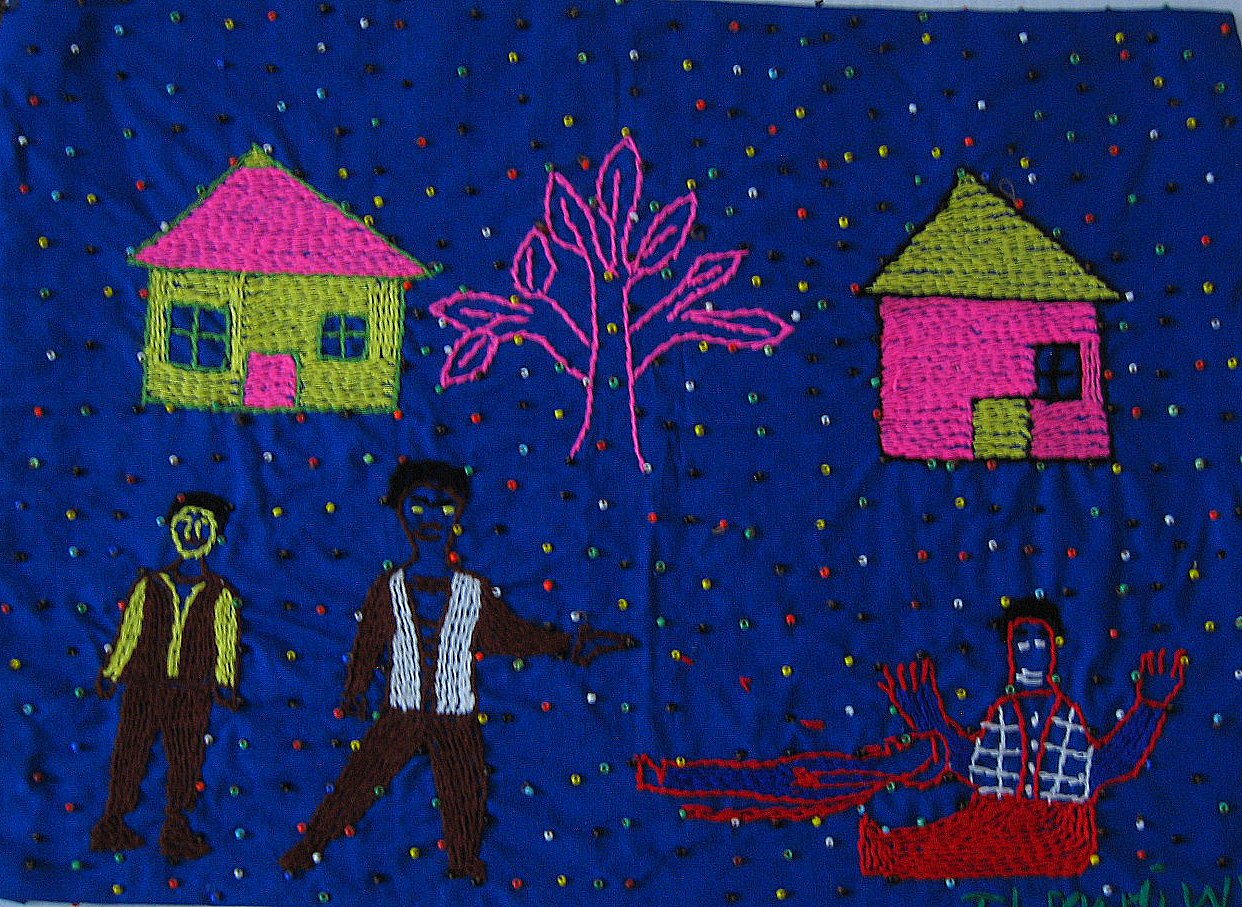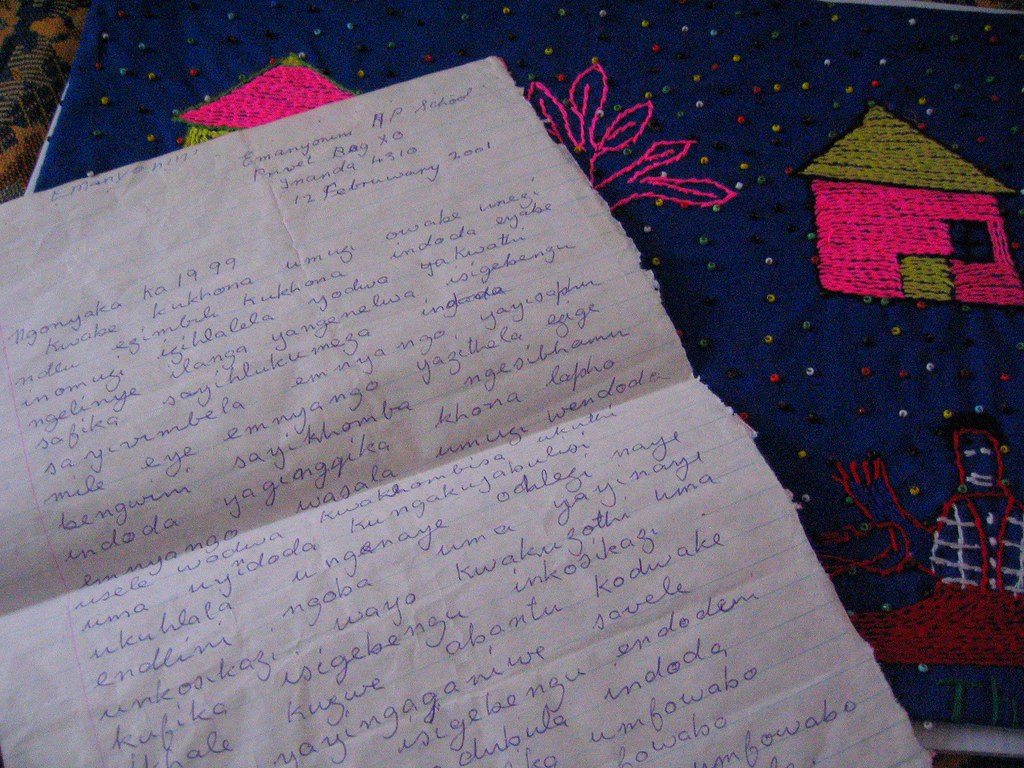
I have been meaning to frame this memory cloth for years. I got it when I was finishing grad school. The William Benton Museum of Art had been engaging art that relates to human rights and, as part of that initiative, they had about a hundred South African memory cloths on display. I've written before about some of the things I found particularly compelling to study (cultural representations of collective memory and trauma in postcolonial contexts). For those of you who read this regularly, you are already familiar with my creative interest in memory. Besides engaging these interests, memory cloths are the visual representations of verbalized narratives. And, well, I'm a sucker for all things ekphrastic.
I hadn't framed it yet, because I wasn't certain how to deal with the narrative element. The cloth came with a narrative, in the words of the creator, printed in - I'll say it - ugly, ugly arial. I felt as though it should probably be hand written for the purposes of display - the little, impersonal rectangle that came with it was out of the question. But I didn't know what kind of paper I should use or whether my own hand writing would look right. For that matter, I wasn't entirely convinced that applying my own handwriting to another's voice was something I wanted to engage in this context.
 [The Bear was curious, too!]
[The Bear was curious, too!]I pealed back the cloth from its board and my heart fluttered right up into my throat when I saw it: she had written it out - in her own hand!

I understand that there's a degree of romanticization occurring here. But I can't help it - there is something about the fact of another person pressing ink into paper that thrills me to my very core. It's not written to me, obviously; it's a much different sensation than what happens to me when I read a letter from a loved one. This has to do with language and time and indisputable indexicality.

